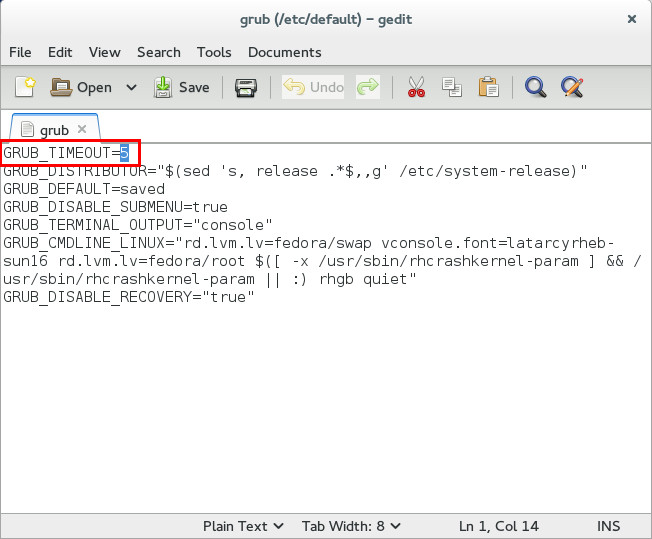

The image file must meet various specifications. You can add a line like GRUB_BACKGROUND=”/home/user/Pictures/background.png” to specify an image file GRUB will use. (Remember, this is only used if GRUB isn’t hidden.) To prevent GRUB from booting automatically and always wait for you to choose an OS, change the line to GRUB_TIMEOUT=-1Ĭhoose a Background Image: The GRUB_BACKGROUND line controls whether a background image is used - by default, GRUB uses a white-on-black monochrome look. To change the timeout period, edit the GRUB_TIMEOUT=10 line and enter any number of seconds you like.

During that time, you can choose another OS or leave it be to automatically boot. GRUB will automatically bot the default operating system after a period of time, usually ten seconds. Ĭontrol GRUB’s Menu Timeout: If GRUB isn’t automatically hidden, you’ll see the menu each time your computer boots. To prevent GRUB from being automatically hidden, comment the line out - just add a # before it so that it reads #GRUB_HIDDEN_TIMEOUT=0. To set a higher timeout, use something like GRUB_HIDDEN_TIMEOUT=5 - GRUB will display an empty screen or splash screen for five seconds, during which you can press any key to view the menu. You can still access the menu by holding Shift as your computer boots. This option specifies GRUB will be hidden and it will automatically boot to the default OS after 0 seconds –immediately, in other words. Save a Default Operating System: If you choose GRUB_DEFAULT=saved, you also need to add a GRUB_SAVEDEFAULT=true line - otherwise it won’t work.Ĭhoose Whether GRUB is Hidden: With only one operating system installed, Ubuntu defaults GRUB to automatically boot to the default OS with the GRUB_HIDDEN_TIMEOUT=0 option.
#Etc defaults grub windows 7
For example, if you had an operating system named Windows 7 (loader) in your OS list, you could use GRUB_DEFAULT=”Windows 7 (loader)” You could also use GRUB_DEFAULT=saved and GRUB would automatically boot the last operating system you chose each time you boot. By default, GRUB_DEFAULT=0 uses the first entry as the default - change the number to 1 to use the second entry, 2 to use the third entry, or so on. If it does, edit the existing line instead of adding a duplicate one.Ĭhoose the Default OS: Change the GRUB_DEFAULT= line. If any of the options below doesn’t already appear in the file, add it on a new line. As with any other configuration file, you need to edit the options to your desired state and then change the file. The /etc/default/grub file is short and should be easy to edit. You can use any text editor you like, of course - including the standard vi text editor. If you want to use a graphical text editor, open a terminal - or press Alt+F2 - and run the following command:įor an easy-to-use terminal-based editor - Nano - use the following command. Open the /etc/default/grub file for editing in a standard text editor. RELATED: A Beginner's Guide to Editing Text Files With Vi In other words, to customize your GRUB2 settings, you’ll have to edit the /etc/default/grub file and then run the sudo update-grub command. When you run the update-grub command, GRUB automatically combines the settings from the /etc/default/grub file, the scripts from the /etc/grub.d/ directory, and everything else, creating a /boot/grub/grub.cfg file that’s read at boot.
#Etc defaults grub mac os
There’s also an os-prober script that checks the system’s internal hard drives for other installed operating systems - Windows, other Linux distributions, Mac OS X, and so on - and automatically adds them to GRUB2’s menu. For example, on Ubuntu, there are scripts here that configure the default theme.

Scripts are also located in the /etc/grub.d/ directory. Edit this file to change GRUB2’s settings. Your own GRUB settings are stored in the /etc/default/grub file.


 0 kommentar(er)
0 kommentar(er)
